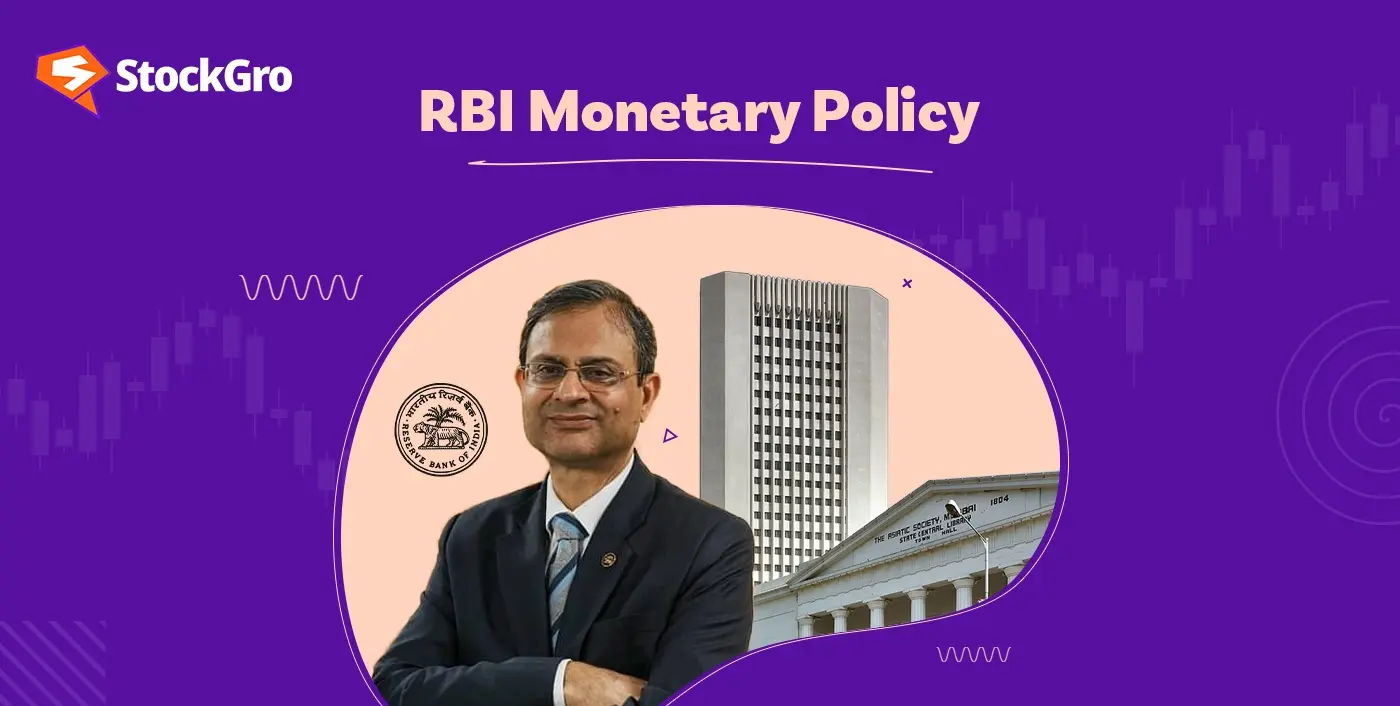
After nearly five years, the Reserve Bank of India (RBI) has cut the repo rate by 25 basis points (bps), bringing it down from 6.5% to 6.25%. The decision, announced during the first Monetary Policy Committee (MPC) meeting under new Governor Sanjay Malhotra, comes at a time when economic growth is slowing, and inflation is gradually aligning with RBI’s target.
Here’s everything you need to know about the latest RBI monetary policy and its implications for the economy.
What is the RBI monetary policy?
The RBI’s monetary policy framework determines the cost of borrowing in the economy. The repo rate, which is the rate at which commercial banks borrow money from the RBI, plays a crucial role in influencing inflation, economic growth, and overall financial stability. A lower repo rate typically reduces borrowing costs, boosting economic activity, while a higher rate helps control inflation.
The latest monetary policy review saw the RBI cutting the repo rate by 25 bps to 6.25%, breaking an 11-meeting streak of holding rates steady since April 2023. The move is expected to provide relief to businesses and consumers alike by making loans cheaper and encouraging spending.
Also read: How Indian Monetary Policy Influences the Stock Market
Why did RBI cut rates now?
The rate cut comes at a time when economic indicators point to slowing growth and inflation stabilizing within RBI’s target range. Several factors contributed to this decision:
- Economic growth concerns: The RBI has projected India’s GDP growth at 6.7% for FY26, lower than previous estimates. A rate cut can help boost investments and spending.
- Stable inflation outlook: Inflation has moderated, with CPI inflation for FY25 projected at 4.8% and FY26 at 4.2%, close to the RBI’s 4% target.
- Fiscal measures in the Budget: The recent Budget announcements included tax relief measures, which the RBI expects to complement the rate cut in boosting demand.
- Global economic uncertainty: With slowing global demand and policy shifts by major central banks, India’s central bank is taking proactive steps to balance growth and inflation risks.
Key takeaways from RBI’s monetary policy decision
1. First rate cut in nearly five years
The RBI reduced the repo rate from 6.5% to 6.25%, marking the first rate cut since May 2020, when the central bank slashed rates by 40 bps to counter the pandemic-driven economic slowdown.
2. GDP growth outlook revised
The RBI maintained a cautious outlook on growth, estimating real GDP growth for FY26 at 6.7%. The quarterly breakdown is as follows:
| Quarter | GDP Growth Projection |
| Q1 FY26 | 6.7% |
| Q2 FY26 | 7.0% |
| Q3 FY26 | 6.5% |
| Q4 FY26 | 6.5% |
In contrast, the first advance estimates for FY25 pegged GDP growth at 6.4%, marking a four-year low due to weaker manufacturing and investment.
3. Inflation nearing target
CPI inflation is expected to decline further:
| Financial Year | CPI Inflation Projection |
| FY25 | 4.8% |
| FY26 | 4.2% |
| Quarter | CPI Inflation Projection |
| Q1 FY26 | 4.5% |
| Q2 FY26 | 4.0% |
| Q3 FY26 | 3.8% |
| Q4 FY26 | 4.2% |
The RBI attributes this to easing food inflation pressures, better agricultural output, and stable fuel prices.
4. Liquidity conditions tightening
The central bank acknowledged that liquidity has tightened due to tax payments, forex operations, and increased currency circulation. RBI remains committed to ensuring adequate liquidity in the system through policy interventions as needed.
5. External sector remains resilient
Despite global headwinds, India’s external sector continues to show strength:
| Key Indicator | Value |
| Current Account Deficit | 1.2% of GDP (Q2 FY25) |
| Forex Reserves | $630.6 billion (Jan 31, 2025) |
| Import Cover | Over 10 months |
The RBI reassured that its exchange rate interventions aim to smooth volatility rather than target specific currency levels.
You may also like: RBI keeps repo rate unchanged: What does it mean for you
What does the rate cut mean for you?
The 25 bps rate cut is expected to impact different sections of the economy in the following ways:
| Impact Area | Expected Effect |
| Loan EMIs | Borrowers may see slightly lower interest rates on home, car, and personal loans. |
| Investment & Savings | Fixed deposit rates may decline, but stock markets could benefit. |
| Business Borrowing | Cheaper loans may encourage businesses to invest and expand. |
| Inflation | Lower rates may increase spending, but inflation remains under control. |
| Stock Market | Investors may see a positive market reaction, particularly auto, and FMCG stocks. |
What next? Will RBI cut rates again?
While the rate cut was in line with expectations, market participants are now speculating whether the RBI will continue easing monetary policy in the coming months. Analysts believe that another 25 bps cut could be on the table in April, depending on inflation trends and global economic conditions.
The RBI’s stance remains “neutral,” meaning it will closely monitor inflation and growth before making further moves. Any additional rate cuts will depend on how the economy responds to this one.
You may also read: List of FMCG Stocks in India 2025
Final thoughts
The RBI’s decision to cut rates after nearly five years signals a shift in monetary policy towards supporting growth. While this move will likely ease borrowing costs and boost sentiment, its real impact will depend on how businesses and consumers respond.
With inflation nearing target levels and global uncertainties still looming, the central bank has taken a calculated step to balance economic growth and stability. For now, all eyes will be on the next policy meeting to see if this is the start of a broader rate-cutting cycle or just a one-time adjustment.

